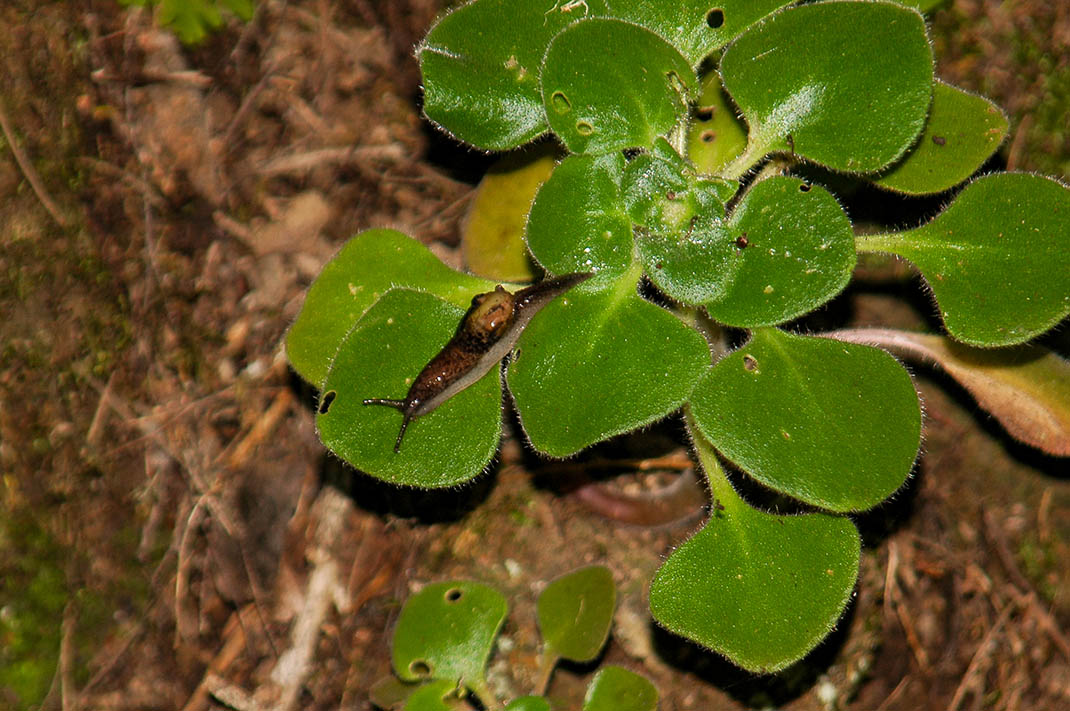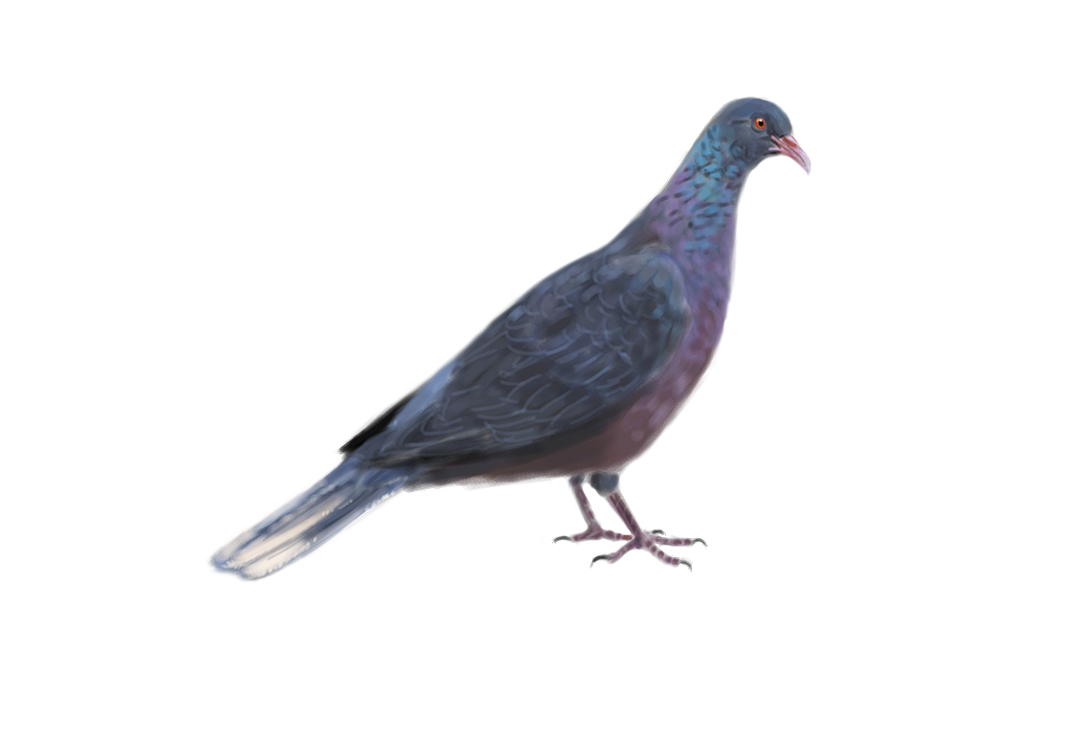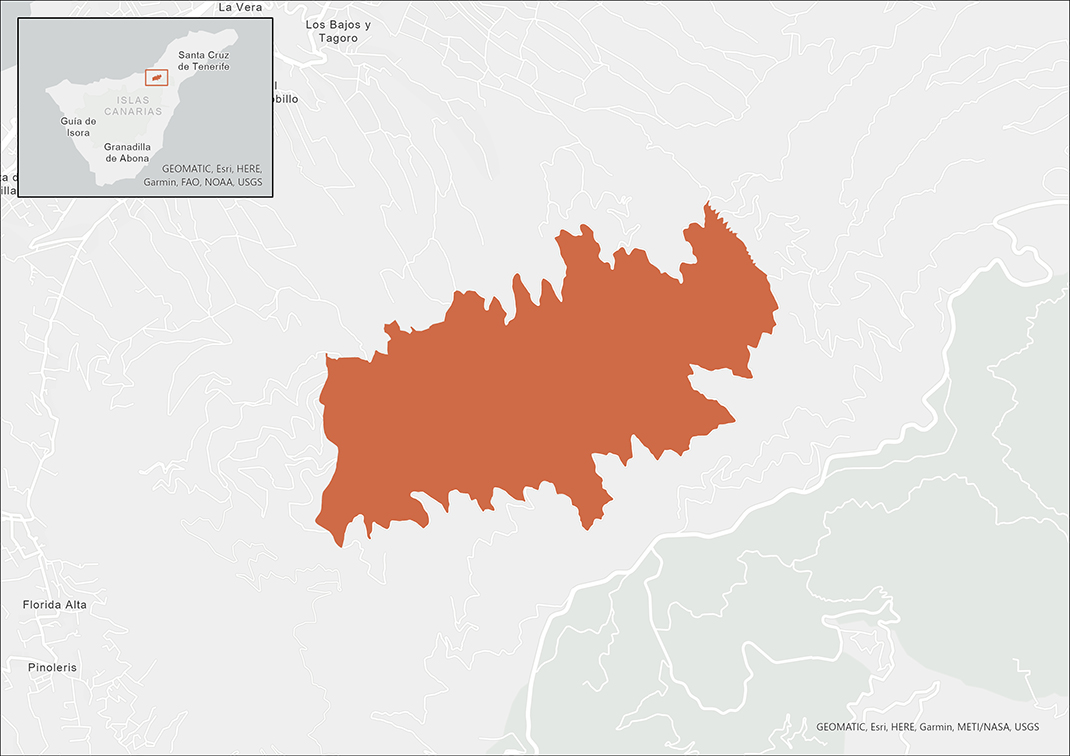Plan your next adventure
Tailor your own route along Tenerife’s trails quickly and easily..
Go to planner
The Las Palomas Special Nature Reserve is located within the Las Lagunetas Protected Landscape, in the north-west of the island, and is characterised by high humidity and natural biodiversity.
Recommended time to visit: Autumn
The reserve occupies a forested mountainside intersected by several ravines, some of which are very steep, such as Barranco de Bensa.
The almost permanent sea of clouds brings with it horizontal precipitation and high humidity levels for much of the year. This favours the monteverde cloud forest, which covers most of the area, and pine forest with monteverde undergrowth, which covers the rest of the reserve.
In addition, these climatic conditions play a fundamental role in aquifer recharge.

The reserve is home to all types of monteverde species:
The rest of the plant life consists of pine forests, of which only 1% is natural, while the rest is the result of reforestation efforts with Canary Island pine and Monterey pine.
As is the case throughout the island, invertebrates account for the majority of animal species that inhabit these forests. Although they are little studied within the reserve, species of note are: Tenerife green bush-cricket (Calliphonakoenigi), chiripadorada (Phyllodromicabrullei), escarabajo pintado del pino (Buprestisbertheloti), the Canary speckled wood butterfly (Parargexiphioides), the Canary blue butterfly (Leptoteswebbianus); and two flies endemic to the archipelago, moscacobrizacanaria (Calliphora splendens) and moscacernidora de monte (Chrysotoxumtriarcuatum).
Among the vertebrates, the Tenerife lizard is the easiest reptile to spot.
As for bats, the only native mammals, the most common is the Madeira pipistrelle. However, in several of the reserve’s galleries you may also spot the Canary long-eared bat and the rare barbastelle bat.
However, one of the main reasons for protecting this area is the presence here of one of the largest populations of the two laurel forest pigeons: Bolle’s pigeon and laurel pigeon.
Other forest birds also inhabit these forests, such as the blue chaffinch, the great spotted woodpecker and the sparrowhawk.

584 ha (0.3% of the island).
Madroño (Arbutus canariensis), mocán (Visneamocanera), acebiño (Ilex canariensis), sanguino (Rhamnus glandulosa), laurel (Laurus novocanariensis), follao (Viburnum rigidum), viñatigo (Persea indica), Canary laurel or barbusano (Apolloniasbarbujana), til (Ocotea foetens), naranjerosilvestre (Ilex perado), faya (Morella faya), tree heath (Erica arborea), Canary Island pine, Tenerife lizard, Madeira pipistrelle, Canary long-eared bat, barbastelle bat, Bolle’s pigeon, laurel pigeon, blue chaffinch, great spotted woodpecker, sparrowhawk.
Pine forest, monteverde.
Barranco de Bensa, Barranco del Pino, Barranco del Madroño.
To consult permits for use and updated regulations for this Protected Natural Area, visit the official website of the Government of the Canary Islands.

Tailor your own route along Tenerife’s trails quickly and easily..
Go to planner